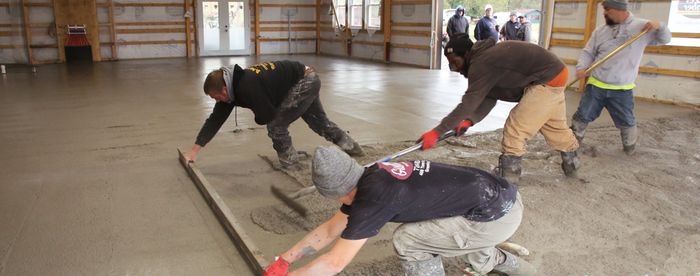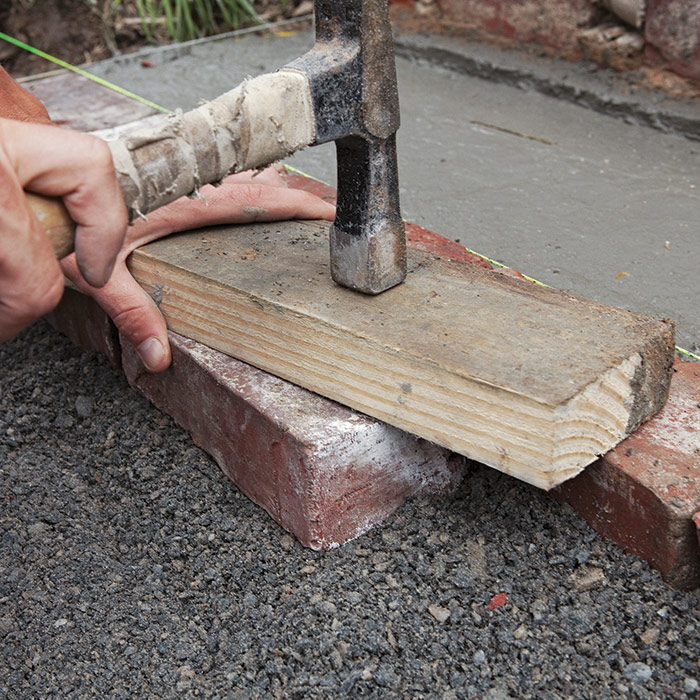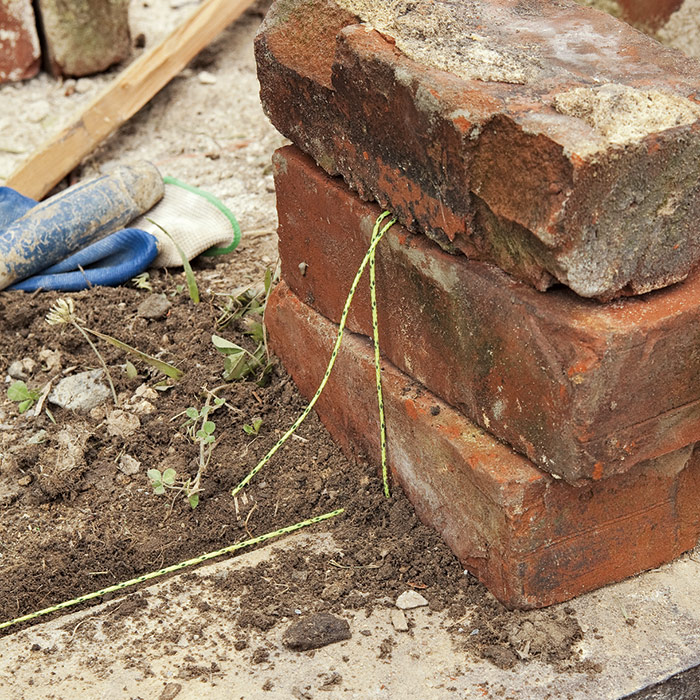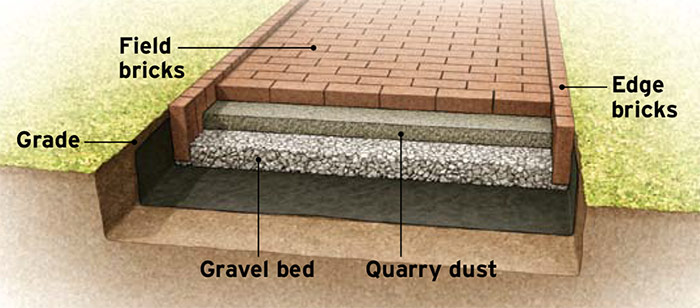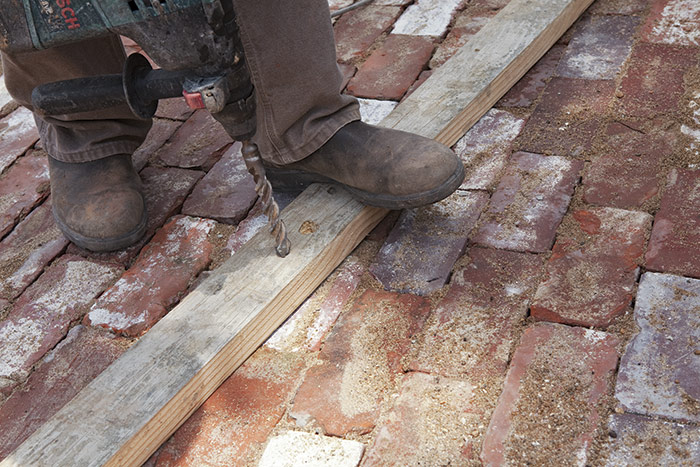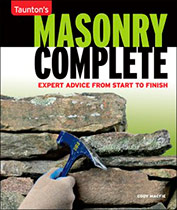Brick Walkway: Setting the Bricks
Learn how to add a sturdy mortared edge and then fill in the field bricks perfectly flat and flush.
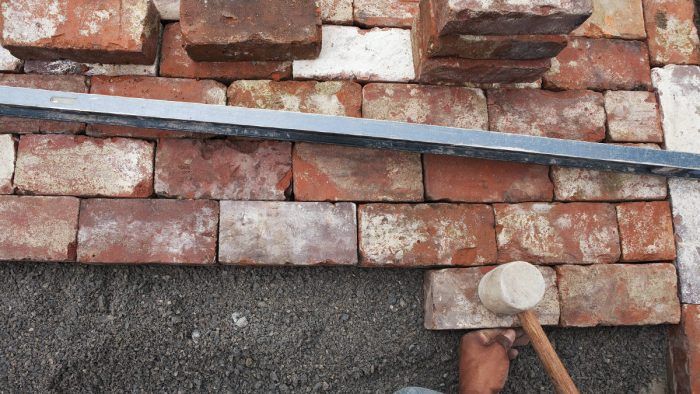
Adding a Mortared Edge
A mortared edge stabilizes a walkway just as a foundation stabilizes a building. It keeps the bricks or pavers from spreading and contains the quarry dust or setting sand, reducing erosion. You can pour a narrow footing (with rebar) to give the edge a solid foundation, but in this case we decided not to because the walkway was sufficiently compacted. Setting the edge in mortar would be adequate. To set the mortared edge, spread a 2-in.-deep layer of mortar along the edge of the walkway 4 in. to 5 in. wide 1. The mortar should be thick enough to hold its shape when you make a channel down the middle. Position the corner brick and gently tap it into the mortar with a rubber mallet 2. Align the brick’s outside edge as close as possible to the twine without touching it.
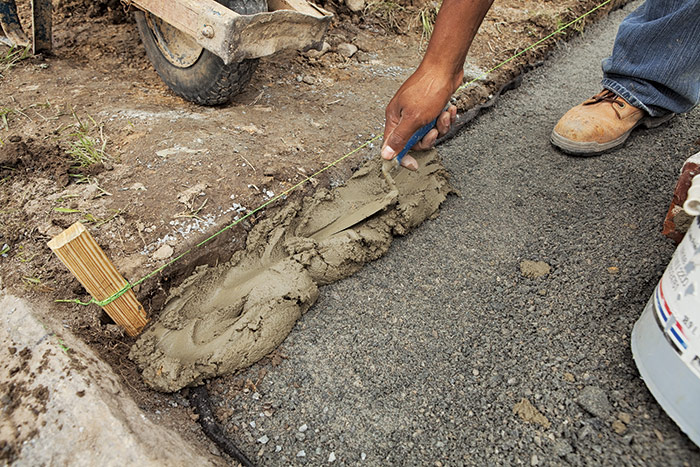
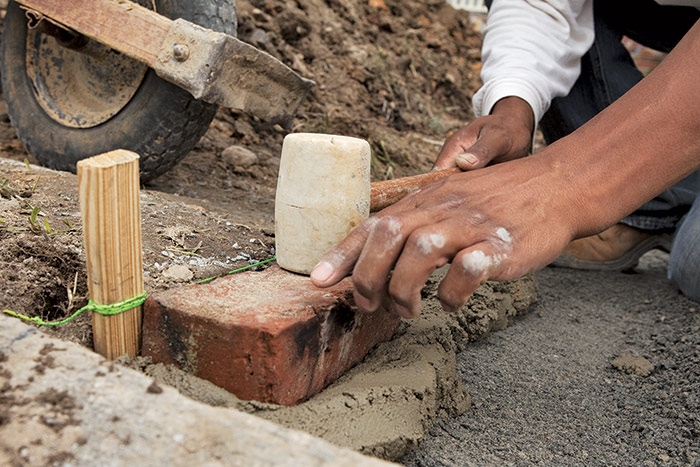
Continue setting bricks along the same row, spreading mortar for a few bricks at a time. Each brick should set about 1⁄2 in. into the mortar without displacing the previous brick just set 3. If a brick sinks into the mortar on its own, or if a set brick moves while setting the next brick, the mortar mix is too wet. As you work, periodically check the bricks for level 4. If the walkway has a slope from side to side, use a mason level to align the brick tops.
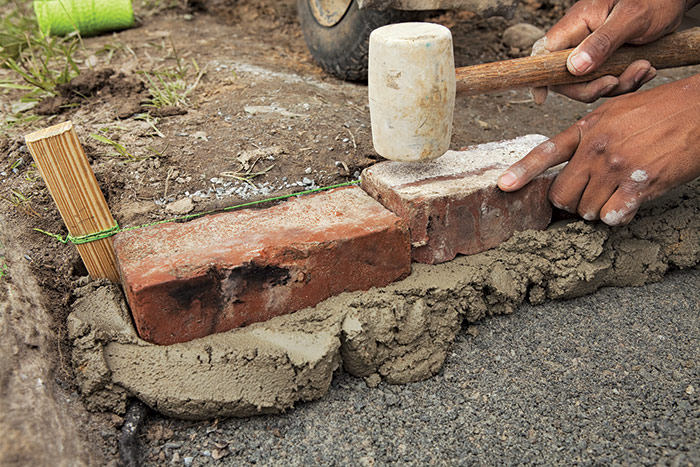
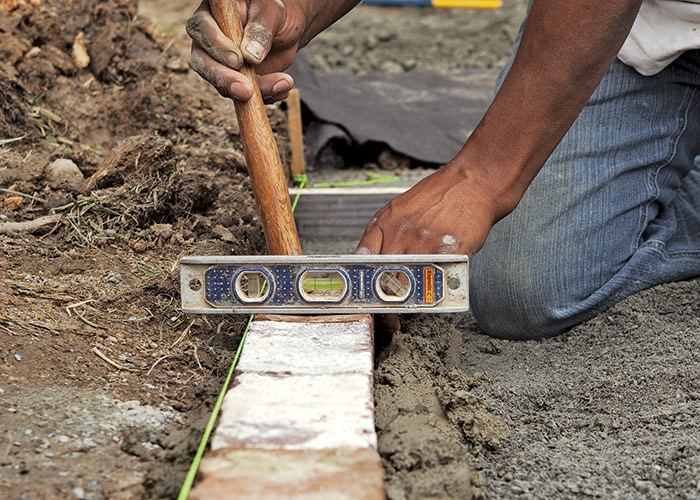
| WHAT CAN GO WRONG: While the bricks should be aligned with the string, sometimes the string will get hung up or pushed by a misaligned brick. To double-check, place a longer level down the row of bricks to make sure the string is still an accurate guide. |
When the two sides of the mortared edge are set, use a mason level to screed the quarry dust 5. Add quarry dust to fill any depressions; use a hand tamper to compact it rather than a motorized compactor. A motorized compactor may shake the bricks you’ve already set out of position 6.

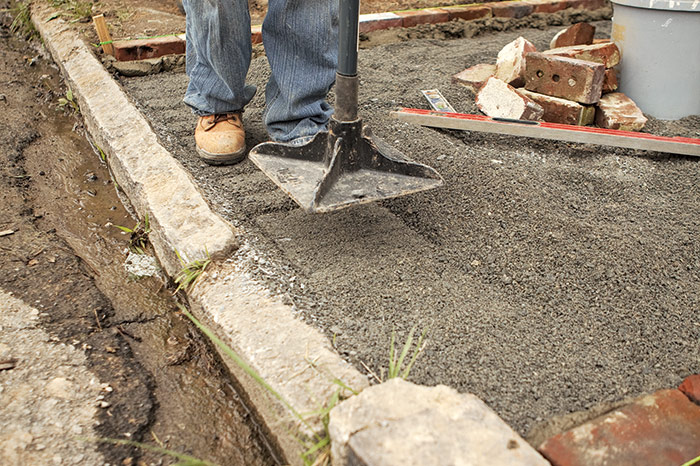
With the surface between the edge bricks flat and compacted, tie mason twine across the end of the walkway at brick height 7. Spread mortar and set the walkway’s end border in the same manner as you set the side borders 8.
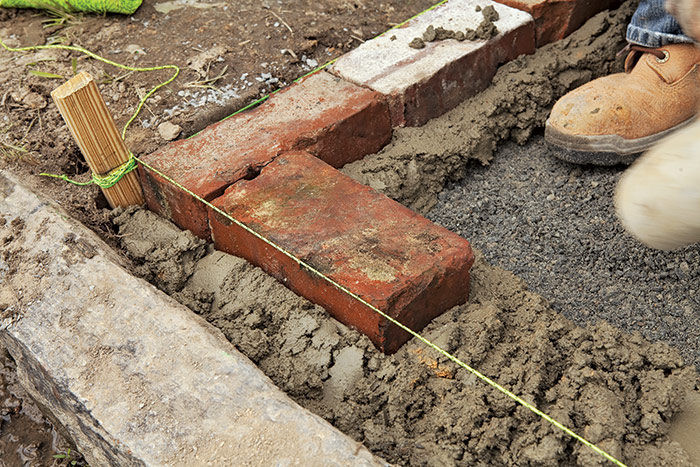
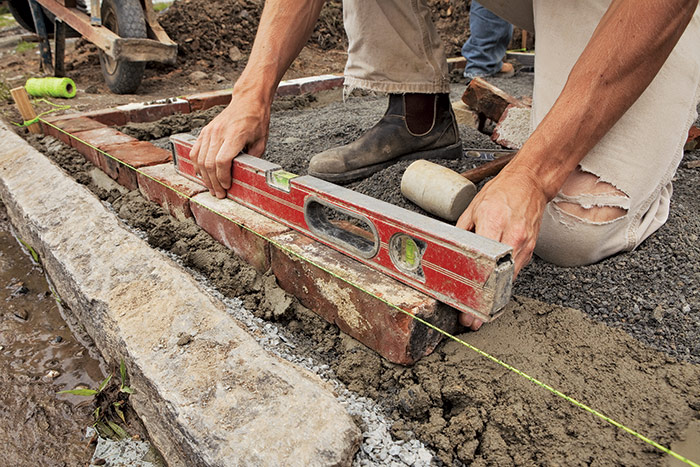
The final step before setting the field bricks is to smooth the mortar base. With a trowel, bevel the mortar along the inside edges of the perimeter bricks and remove excess mortar 9. The bevel provides room for quarry dust and field bricks to be positioned right up to the edge bricks without mortar getting in the way.

A BORDER WITHOUT MORTARIf you don’t want to set the border in mortar, you can lay the edge bricks on their ends so that they are raised slightly above grade, approximately 1 in. above the walkway. This is called a brick-soldier edging. Laying the field bricks on their ends, butted against undisturbed soil, will bind them together. If the edge bricks aren’t secure, they are prone to sink. If one brick sinks, it creates a domino effect and adjacent bricks will sink as well. The edge is like a foundation. As long as it is secure, the field will be, too. |
Setting Field Bricks
For this project, we chose a running-bond pattern, meaning the joints in neighboring rows are offset by the length of half a brick. All the field bricks are set parallel to the end border. Once you develop the rhythm of laying bricks, this process will go fairly quickly.
To begin, spread an even layer of loose quarry dust under the bricks to be set. Run full bricks for the first course, and then start the first brick for the second course half a brick away from the edge bricks 1. When you first rest a brick on the quarry dust, the top should be about 1⁄2 in. high. Strike the brick three or four times with a rubber mallet to set it flush to the tops of adjacent bricks 2. If the brick won’t sit flush with the other bricks, scoop out some of the stone dust beneath it. Then reset the brick. It’s easier to gauge the correct amount of quarry dust if you prepare an area for several bricks at once. For best results, hold a long mason level or straightedge over several bricks and the mortared borders as you set them 3. For a wide walk or for a walk that does not have a natural slope, set the bricks with a slight (1⁄2-in.- to 3⁄4-in.-high) center crown to prevent standing water from accumulating later.
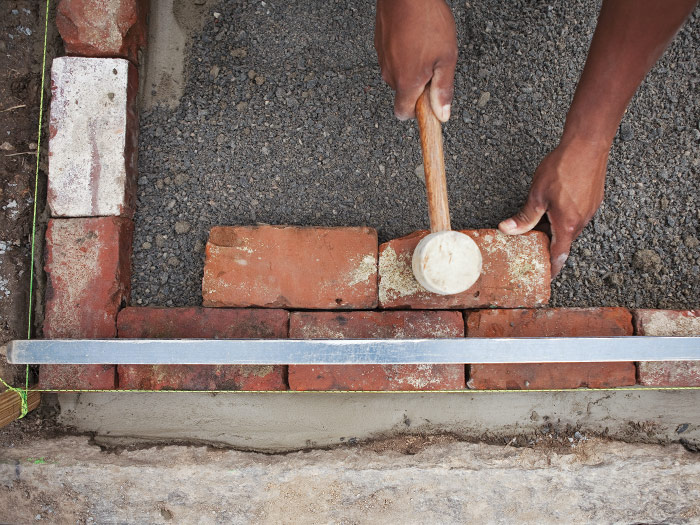
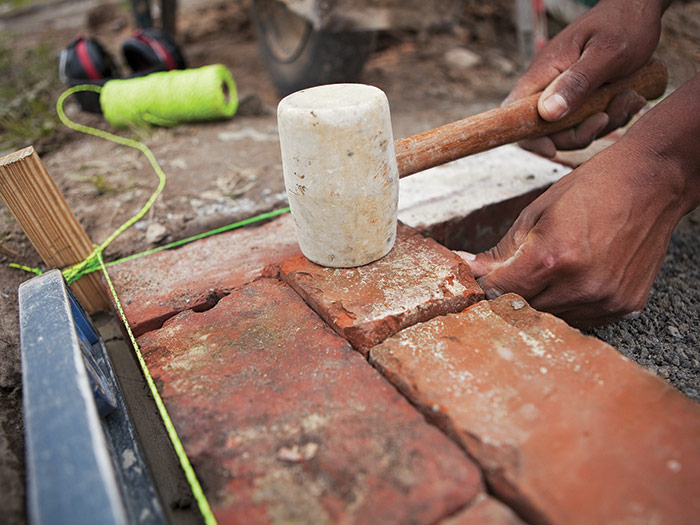
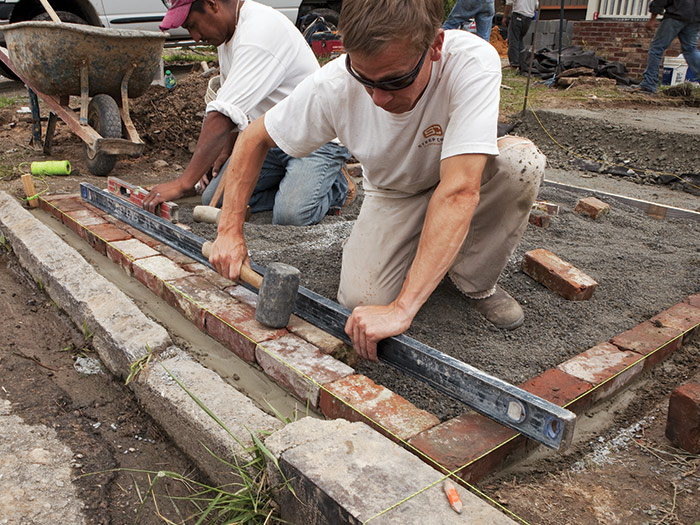
Cut half-bricks at the ends of every other row as you need them, or a few at a time 4. Leave a 1⁄8-in. gap between the bricks so the joints can be filled with sand after all the bricks are set.
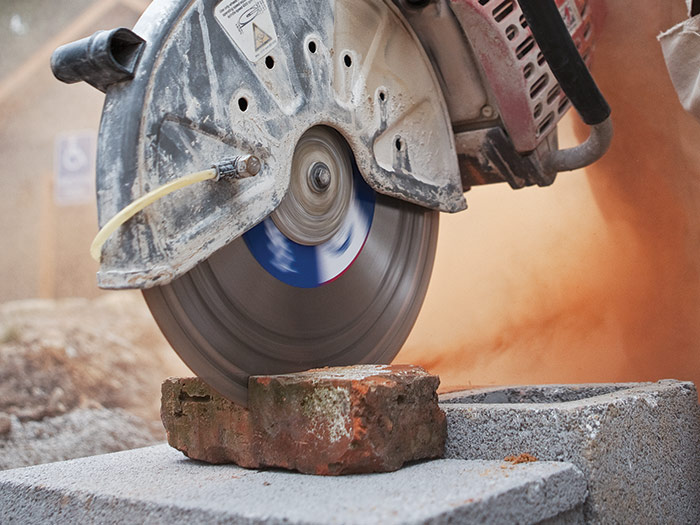
The best brick setters develop a rhythm that is not too fast and that wastes very little energy. In general, work toward yourself rather than kneeling on the brick and working away from yourself. Keep the area neat and free of extraneous tools and debris 5. A helper can be invaluable, providing a continuous supply of bricks (including cut bricks), quarry dust, and even drinking water.
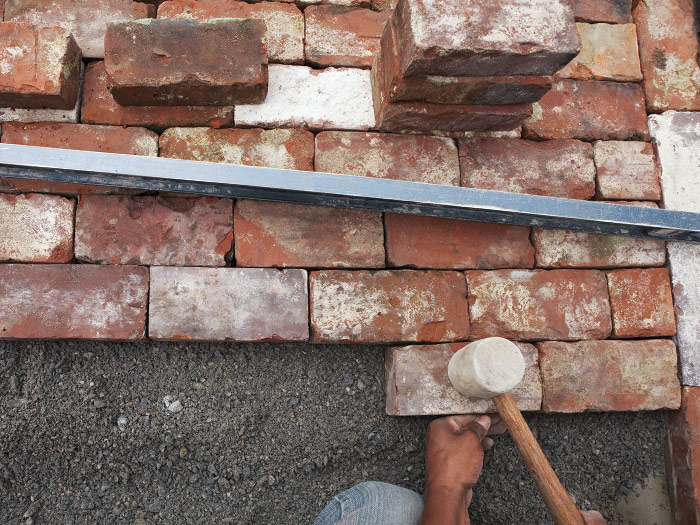
After every three or four rows, check for straightness with a mason level or straight board 6. Periodically measure from each side of the row to the end to be sure that one side is not creeping ahead of the other. It’s especially important to check if two people are setting bricks side by side.
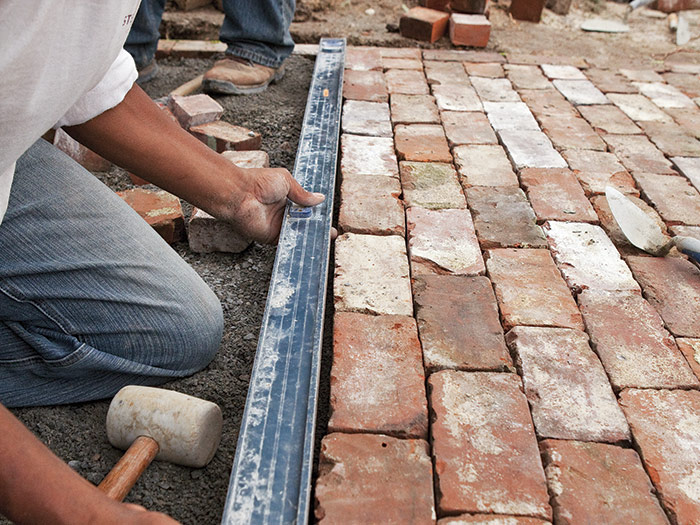
Filling the cracks
Once the bricks are laid, fill the joints halfway with sand. Make sure the sand you use has been screened multiple times so that no pebbles remain and all the small particles will fall into the joints. Masonry sand should work just fine. Then run water over the walkway to remove air pockets and to pack the sand down. Continue sweeping sand into the joints until they are full. Then run water over the patio again, letting the sand settle 7. Leave a little sand nearby because you might need to add more after a few rains.
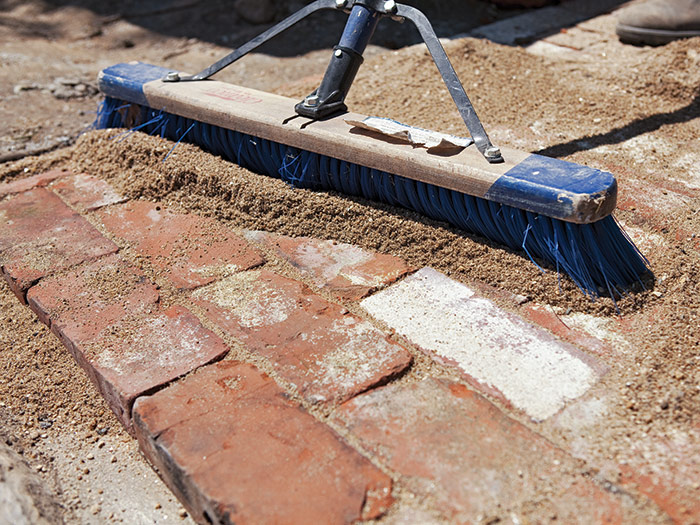
| TRADE SECRET: A good way to get sand down into the cracks is to use an impact driver or roto-hammer to vibrate a board set on top of the bricks. This quickly settles the sand into the cracks. Don’t use a motorized compactor or you run the risk of breaking bricks. |
Excerpted from Masonry Complete (The Taunton Press, 2012) by Cody Macfie
Available at Amazon.com.
